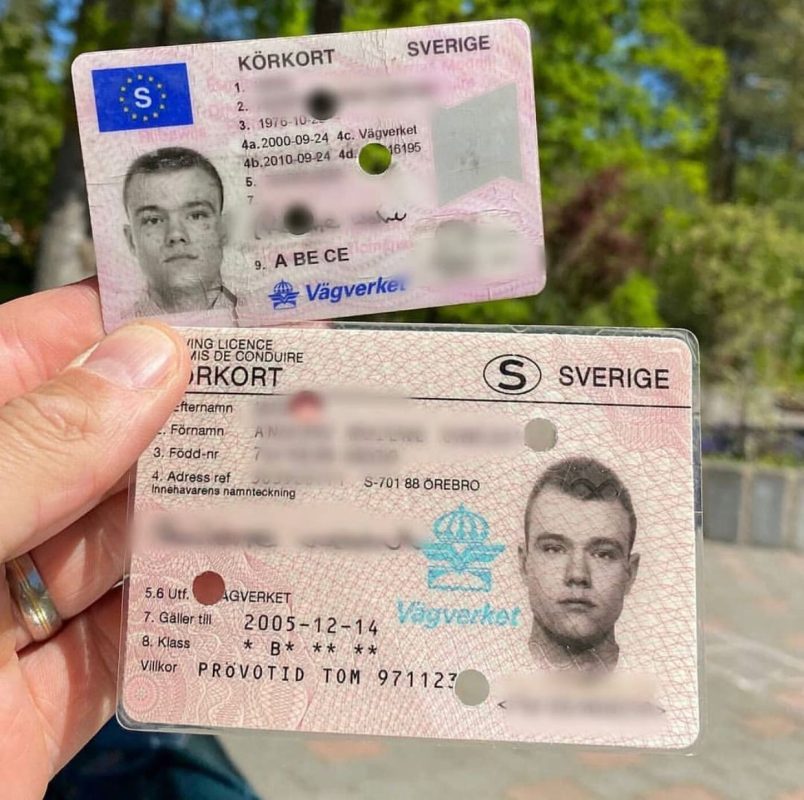The Future of Driving Licenses: ID Handling in 2025
As innovation continues to evolve at an unmatched rate, numerous sectors are welcoming developments to boost user experience and performance. Among the areas experiencing substantial transformation is identity management, especially worrying driving licenses. With the introduction of digital licenses and advanced recognition techniques, the landscape of driving license ID handling is anticipated to go through significant changes by 2025. This short article explores the anticipated developments in driving license ID handling, the implications for users, and answers often asked concerns about the future of driving licenses.
The Evolution of Driving Licenses
Driving licenses have traditionally acted as a means of identifying an individual's authority to operate a motor automobile. Köpa Körkort Online serve multiple secondary purposes, including age verification and identity verification for banking and travel. However, the physical card system has limitations, including threats of counterfeiting, loss, and outdated info. As society seriously depends on efficient and safe and secure recognition systems, the transition towards digital licenses is ending up being significantly popular.
Existing Trends in Driving License ID Handling
- Digital Licenses: Many states are piloting digital driving licenses that enable users to save their credentials on their smart devices. These digital licenses are developed with innovative security features, including biometric information, and can be scanned or shared securely.
- Blockchain Technology: Some jurisdictions are exploring blockchain to improve the security and authenticity of driving licenses. This technology guarantees that info can not be tampered with and that the information is quickly proven.
- Facial Recognition: Increasingly utilized in identification practices, facial recognition innovation can speed up the procedure of validating a person's identity against their driving license. This technology also helps minimize scams and maintain the integrity of the licensing systems.
- Multi-Functional Licenses: Future driving licenses may integrate additional features such as health records, travel documentation, and even payment systems, providing a detailed identity solution.
The Benefits of Digital Driving Licenses by 2025
The shift toward digital driving licenses presents numerous benefits, consisting of:
- Convenience: Users can access their licenses anytime, which gets rid of the requirement for physical cards. This is particularly beneficial when people forget their license, as digital copies can be obtained rapidly.
- Security: Advanced security measures can lower the risk of identity theft, scams, and unapproved duplication. Digital licenses frequently include file encryption and biometric verification.
- Effectiveness: Reduced wait times at government workplaces and throughout traffic stops, as police can validate digital licenses immediately.
Implications for Users
While the improvements in driving license ID managing present various benefits, they likewise include difficulties. Users require to adjust to brand-new innovation and guarantee they understand the modifications and their ramifications. Here are some factors to consider:
- Privacy Concerns: With increased digital footprints, there will be heightened concerns over information personal privacy and how biometric information is kept and utilized.
- Availability Issues: Individuals without access to smartphones or digital technologies may face barriers to getting and using digital licenses.
- Regulative Compliance: With numerous jurisdictions adopting various systems and procedures, users should be conscious of their local laws relating to digital licenses and recognition.
Anticipated Changes in Driving License ID Handling by 2025
| Aspect | Existing Status | Anticipated Change by 2025 |
|---|---|---|
| License Format | Physical cards | Primarily digital licenses |
| Verification Process | Manual checks | Automated biometric confirmation |
| Security Measures | Fundamental holograms and functions | Advanced file encryption and blockchain |
| Jurisdictional Differences | Fragmented processes across states | More standardized national systems |
| User Interaction | In-person renewals and checks | Mobile applications for management |
Frequently asked questions
1. What is a digital driving license?A digital driving license is an electronic variation of a standard driving license that is kept on a mobile phone. It can be used for recognition and confirmation in different circumstances, with improved security functions to prevent scams.
2. How will digital licenses improve security?Digital licenses make use of file encryption and biometric data, making them harder to create or misuse compared to traditional cards. Additionally, blockchain innovation can guarantee data credibility and stability.
3. Will everyone be required to change to a digital license?While numerous jurisdictions are approaching digital licenses, policies may differ. Users are encouraged to check with their local licensing authorities for specific guidelines.
4. What are the possible downsides of digital licenses?Some prospective drawbacks consist of personal privacy concerns concerning information storage, accessibility issues for individuals without smartphones or digital literacy, and the need for a robust regulative structure to manage security and user rights.
5. How can I prepare for the shift to digital licenses?Stay informed about regional initiatives relating to digital licenses, explore available mobile applications for managing identification, and cultivate digital literacy to browse new innovations with confidence.
The future of driving licenses and ID handling is poised for significant advancement by 2025. As digital licenses end up being more prevalent, users will experience enhanced security, benefit, and effectiveness. However, alongside the advantages come difficulties that will require public awareness and adjustment. Stakeholders should prioritize education, guideline, and ease of access to guarantee a smooth transition that empowers individuals with the identification tools of the future. As innovation advances, so too will the approaches through which society handles identity, especially important in procedures as essential as running an automobile.

